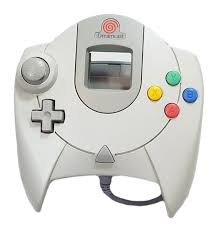Four weeks ago I made the full switch from Mac to Linux. I have played with Linux on and off for years but had always gone back to using macOS. I think some of this was because I had the hardware to do it. However this time I made the big leap. I sold my Mac and bought a Dell laptop. There was no going back. Breaking free from Apple's walled garden approach has been a breath of fresh air in my tech life, but how has the transition from a platform I had used for 20+ years to uncharted waters gone?
Hardware wise, everything went fine. I’ve had no issues setting up and using Linux Mint 20 Cinnamon on my Dell Latitude E5410. All internal hardware works perfectly, any external drives or USB attachments work too – such as USB 3D audio stick, Bluetooth adaptor and spare WiFi adaptors – all work without having to fish around for additional drivers or services. I had one Bluetooth adaptor that was recognised by the system but failed to work. Not a huge problem just a small annoyance, but this was due to the chipset in it. My other works fine, so I am OK. Even my wireless printer – which I hadn’t give much thought about – just was there ready to be used.
One issue I had when I first started was keyboard shortcuts. My hands had gotten so used to Apple+Q etc that I had to keep reminding myself to use the Ctrl and Alt key instead, something that happened very quickly to my surprise.
A side point, I did take off the Windows key on my keyboard and remove the Windows logo from it. It bugged me seeing that little flag there each day.
Software wise, everything went fine. I checked software before I transitioned and minus a few Apple only apps I was already using cross platform tools, which I carried on using in Linux. I have had no issues day-to-day getting what I need done, which is mainly browsing, emailing, social media, music conversion, image editing and transferring files to and from my Android phone and to external backup drives.
The only stumbling block was finding a video editing tool that was easy to use that could take on the small tasks I needed to edit my YouTube videos before uploading. I have an intro I needed to drop in about 10 seconds in to my videos and I liked to snip sections out through videos, just to make them tidy (I have a habit of saying ‘um’ and rambling a bit off topic). I had intended to use OpenShot, but it is a highly unstable piece of software that also caused audio artefacts. So I switched to Kdenlive, which was much more sprightly, stable and no audio issues. Within an hour of installing it, I had gotten used to it and performed the editing I needed.
A small niggle with emailing, though more Thunderbird's fault than Linux itself. I used to use Thunderbird a lot and didn’t realise it was officially retired and only community supported. I had issues with it connecting to my Google mail servers and not wanting to send emails at times. However, using the Gmail web interface is a great alternative until I find a better email client.
Overall I am loving Linux. It is a strange feeling not to know an OS inside out. After using a Mac for 20+ years there wasn’t anything I didn’t know how to do, but with Linux its a huge learning curve, and I have had to ask my Linux guru friend more times than I would have liked or Google a few ‘how to’ issues. This will pass with more using and I am already feeling quite confident in Terminal.
Linux is far more newbie friendly than it has ever been. It is a clean, easy to use, bloat free OS that doesn’t get in the way of what you need to do. Even updates just sit patiently waiting for you to install them when it is convenient rather than popping up and getting in the way of work or waiting til you want to shut down and then installing.
I am embracing my new direction and my new non-Apple hardware. It is the best move I made since ditching my iPhone for Android a few years back.
I can only look forward to using my computer how I want and learning Linux more and more each day.

















